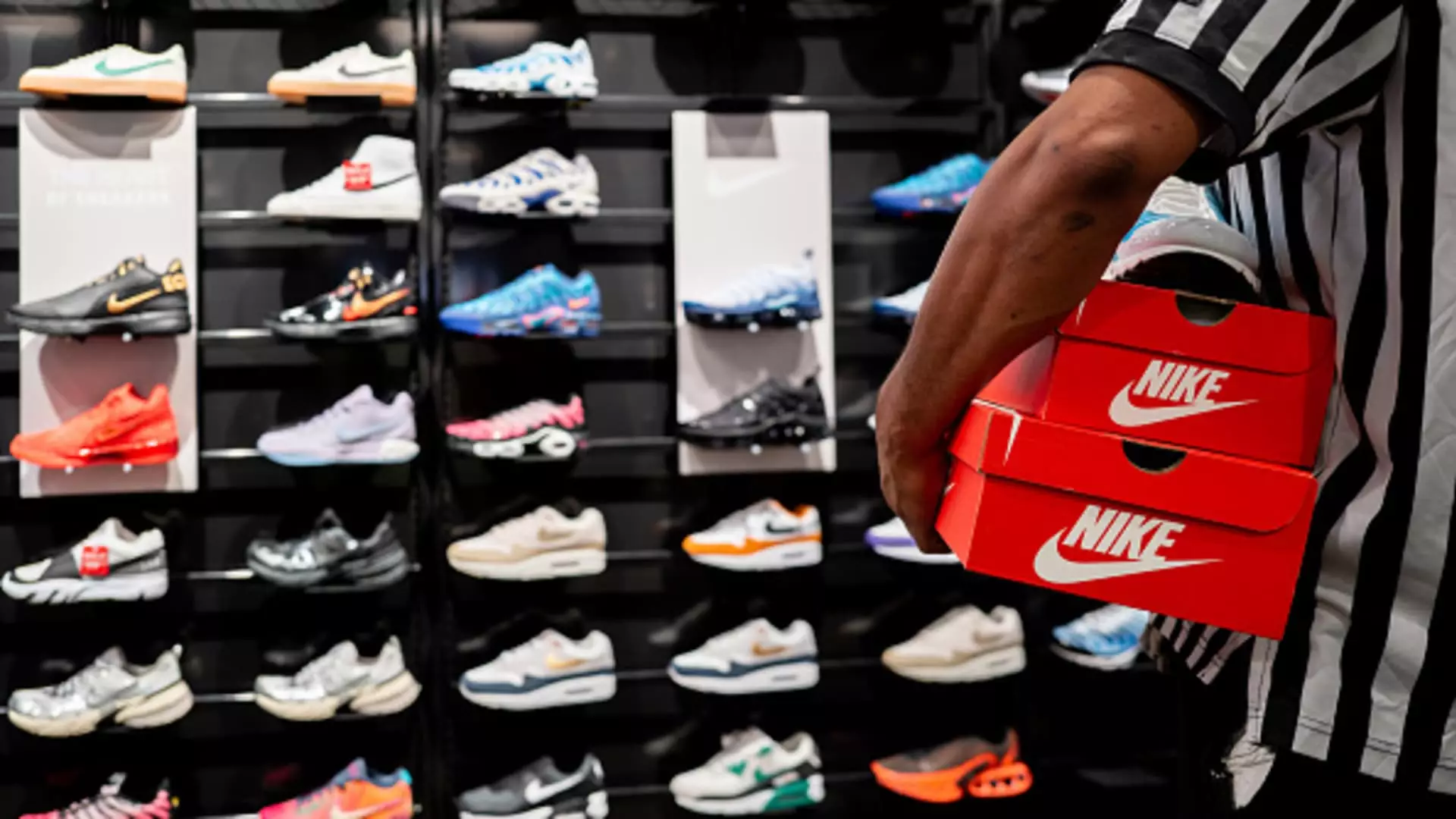As investors eagerly await Nike’s quarterly earnings announcement, scheduled for Tuesday, there is a palpable sense of skepticism surrounding the results. The athletic wear giant is set to unveil its fiscal first quarter results for 2025, and consensus among analysts, as reflected in estimates pulled from LSEG, suggests a steep decline in performance. The anticipated earnings per share (EPS) stand at just 52 cents, with revenue projected at $11.65 billion. These figures indicate a staggering 10% drop in sales compared to the previous year, alongside a staggering 45% plunge in profits. Such bleak forecasts illuminate a troubling trajectory that has raised concerns about Nike’s strategic direction.
Adding to the uncertainty is the recent announcement that CEO John Donahoe will be stepping down. This leadership transition underscores deeper issues within the company, potentially reflecting its struggle to respond effectively to market dynamics. In September, Nike named Elliott Hill, a seasoned executive with 32 years of experience at the company, as Donahoe’s successor, slated to officially take over on October 14. While under Donahoe’s stewardship, Nike experienced notable annual sales growth exceeding 31%, the methods by which this growth was achieved have faced considerable scrutiny. Critics point out that the reliance on established franchises like Air Force 1s and Dunks has stymied the introduction of groundbreaking innovations that historically fueled Nike’s global dominance.
The Need for a Dynamic Innovation Strategy
The ongoing reset at Nike is characterized by a clear need for revitalization in the company’s innovation pipeline. Donahoe himself acknowledged previous shortcomings in this critical area, which analysts believe have led to the brand ceding market share to nimble competitors. This over-reliance on legacy products is a risk that could stifle Nike’s long-term viability. Incoming CEO Hill faces the monumental task of not only rebooting innovation but also restoring relationships with key wholesale partners. In recent years, Nike’s strategy of emphasizing direct-to-consumer sales—which has included major investments in its own retail channels—has resulted in tensions with traditional distribution partners such as Foot Locker and DSW.
Nike’s struggles are exacerbated by broader economic challenges. The U.S. footwear market is forecast to grow a mere 2% this year, following a stagnant period in 2022 and 2023. While the athletic footwear category is projected to see slightly better growth at approximately 5.6%, this is hardly a resounding endorsement for a company of Nike’s stature. Consumer spending on discretionary items, including new footwear, remains sluggish, posing an uphill battle for the iconic brand.
Adding complexity to this scenario is Nike’s performance in China—the third largest market by revenue. Nike has often looked to its success in this region as a barometer of broader economic health. The company previously issued a cautionary note regarding a “softer outlook” in the Chinese market, creating further uncertainty leading into the earnings report. However, potential hope looms with China’s recent stimulus measures—its largest since the pandemic—aimed at invigorating the economy. Although the fiscal first quarter concluded before these measures came into effect, any insights executives share regarding current sales trends will be crucial.
The Road Ahead for Nike
With shares currently trading at $88.40 and a dramatic decline of about 19% year-to-date—significantly underperforming the S&P 500’s approximately 21% gains—the stakes are undeniably high for Nike. Hill’s leadership will be scrutinized as he attempts to steer the company through this turbulent period while combating investor anxiety and repairing brand loyalty. As the sneaker industry grapples with economic uncertainty, Nike must rediscover its innovative spirit and strategically navigate these tumultuous waters. The upcoming earnings call will not only provide insight into the company’s financial health but also reflect its vision for rejuvenation and competitive re-entry into the evolving marketplace.


Leave a Reply